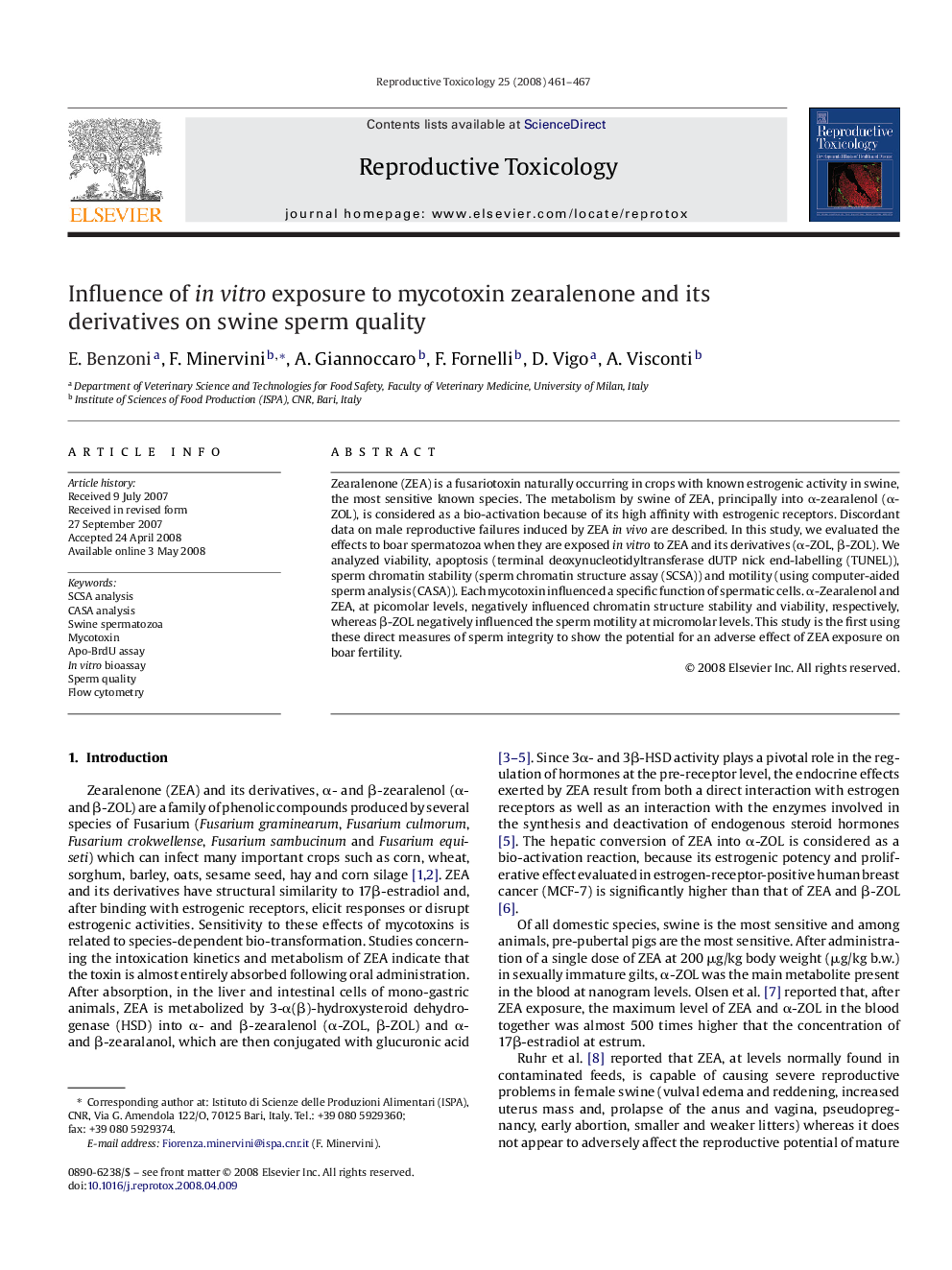| Article ID | Journal | Published Year | Pages | File Type |
|---|---|---|---|---|
| 2595185 | Reproductive Toxicology | 2008 | 7 Pages |
Zearalenone (ZEA) is a fusariotoxin naturally occurring in crops with known estrogenic activity in swine, the most sensitive known species. The metabolism by swine of ZEA, principally into α-zearalenol (α-ZOL), is considered as a bio-activation because of its high affinity with estrogenic receptors. Discordant data on male reproductive failures induced by ZEA in vivo are described. In this study, we evaluated the effects to boar spermatozoa when they are exposed in vitro to ZEA and its derivatives (α-ZOL, β-ZOL). We analyzed viability, apoptosis (terminal deoxynucleotidyltransferase dUTP nick end-labelling (TUNEL)), sperm chromatin stability (sperm chromatin structure assay (SCSA)) and motility (using computer-aided sperm analysis (CASA)). Each mycotoxin influenced a specific function of spermatic cells. α-Zearalenol and ZEA, at picomolar levels, negatively influenced chromatin structure stability and viability, respectively, whereas β-ZOL negatively influenced the sperm motility at micromolar levels. This study is the first using these direct measures of sperm integrity to show the potential for an adverse effect of ZEA exposure on boar fertility.
